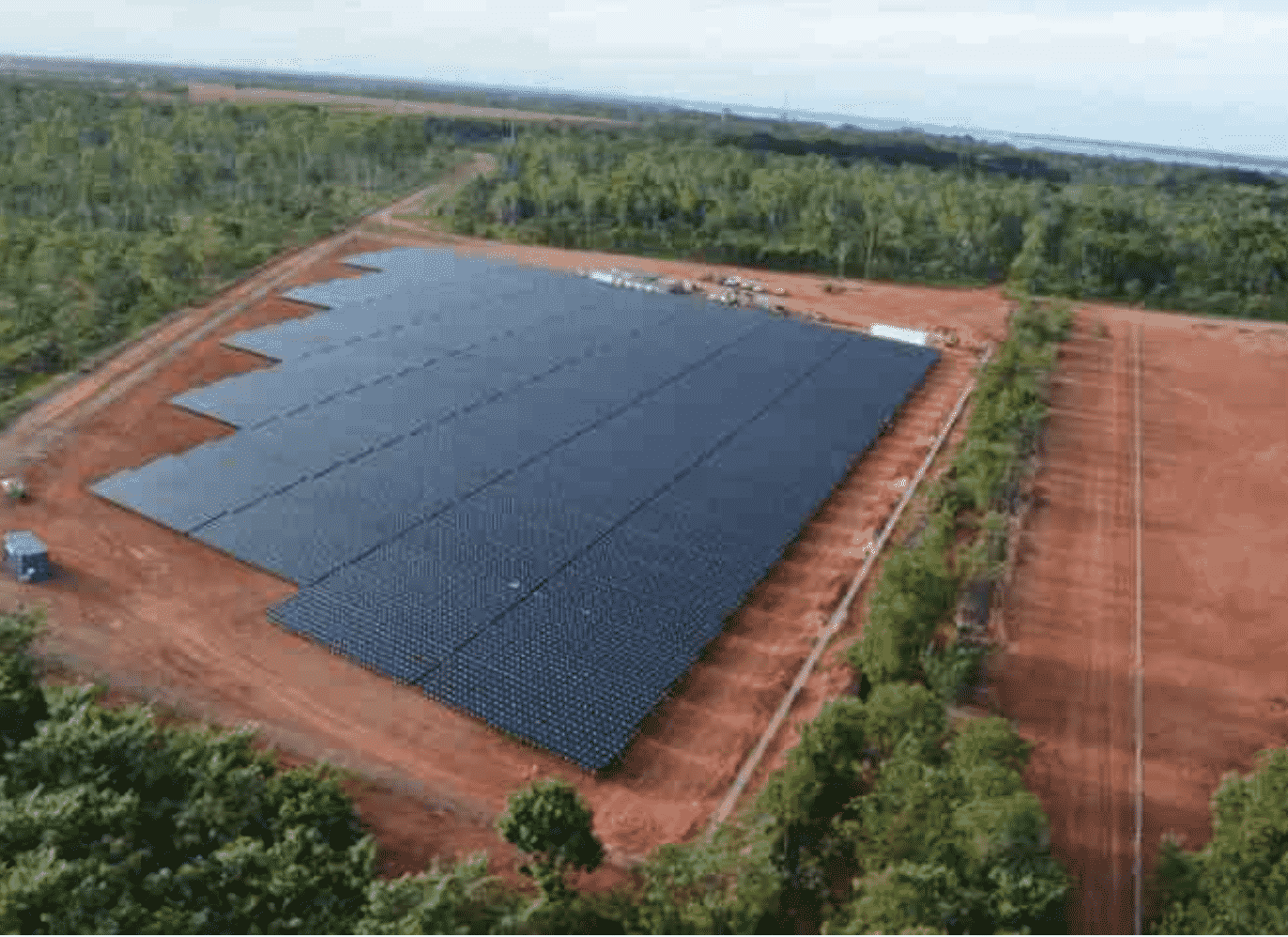The renewable revolution has been underway for quite some time now. Each country has taken considerations (some more than others), and most have slowly adjusted habits of business to accompany the change in energy dependency. To this day, no country has cracked the code for shifting the economy from a fossil fuel-dependent to a renewable dependent economy, which is one of the missing keys to a countries capability to fully transition its energy dependency. There are two other major factors also missing from this equation, which are time and legislation.
Change is Inevitable
When the industrial revolution began in the 19th Century, it didn’t initially do much “good” for the common folk. The first ones that could take advantage of the technology were those that could afford the luxury. However, over time it completely revolutionised not only the industrial production but also everyone’s way of living. This is at the scale of change we will expect to be seeing in our future. We will see the uprise of cars filled with hydrogen to take us over 850km in one tank (which are currently on the market), we will see microgrids become a normal consideration when purchasing a property, public transport will run on gas or electric-based engines and the adoption of many other upgrades and alternatives to our current lifestyle.
The world we see today will be completely different. Whilst the current generation of parents who had to dial-up Internet and landlines, and witnessed the rise of major conglomerates such as Apple, Microsoft and Google, maybe the next generation will witness the transformation from fossil fuels to renewable-based energy, and the rise of renewable energy giants. This will, however, take time. For most this transition hasn’t yet begun, like for the majority at the beginning of the industrial revolution.
Momentum Building
We have come momentously far with our development of petrol and coal-based technology; just juxtapose the difference between a car in the 1930s compared to today, or the way electricity is utilised and transmitted. As the technology was embraced by society, naturally, investment skyrocketed, R&D exponentially grew, and we saw the uprise of cars all over the world, and coal plants emerge at almost all corners of the globe that could afford it. As newer models came out, and the price dropped, the middle class was able to afford such luxuries. However, this was only able to occur over time, which allowed the market to establish itself and stabilise. Today we are at those early stages of product development, where the financially endowed are able to bask in the glory of Tesla’s and renewable technology to power their entire lives. However, in the last 10 years, the cost of batteries and solar systems have dramatically fallen. Every year we see billions of dollars funnelled to R&D and renewable energy. A domino of change has been struck, and the next few decades we will see those tiles fall as we see technology become cheaper, more reliable and more available.
Are environmental regulations, health and safety concerns or potential profit loss a concern right now?
Examples of Change in the Mining Industry
A topic that must be discussed is the difference between the common folk waiting for the change, and adapting an already established business to stay relevant. The mining industry has foreseen the eventual demise of the thermal coal and other fossil fuels, as societies’ views have changed over the last few decades. As a consequence, some of the largest mining companies, such as a Rio Tinto, have refocussed their efforts to alternative means of profit, such as solar energy.
They have released a statement expressing their ambitious $98 million plan to build a 34MW solar PV plant, which is to be backed by a 12MWh of storage, in the Pilbara region of Western Australia. The 100 000 solar panelled facilities will cover over 65% of the mine average electricity demand and are capable of covering all demand at peak solar generation periods. In the figure below we see the solar PV’s capabilities of absorbing energy at different rates depending on the time of day, compared to diesel.
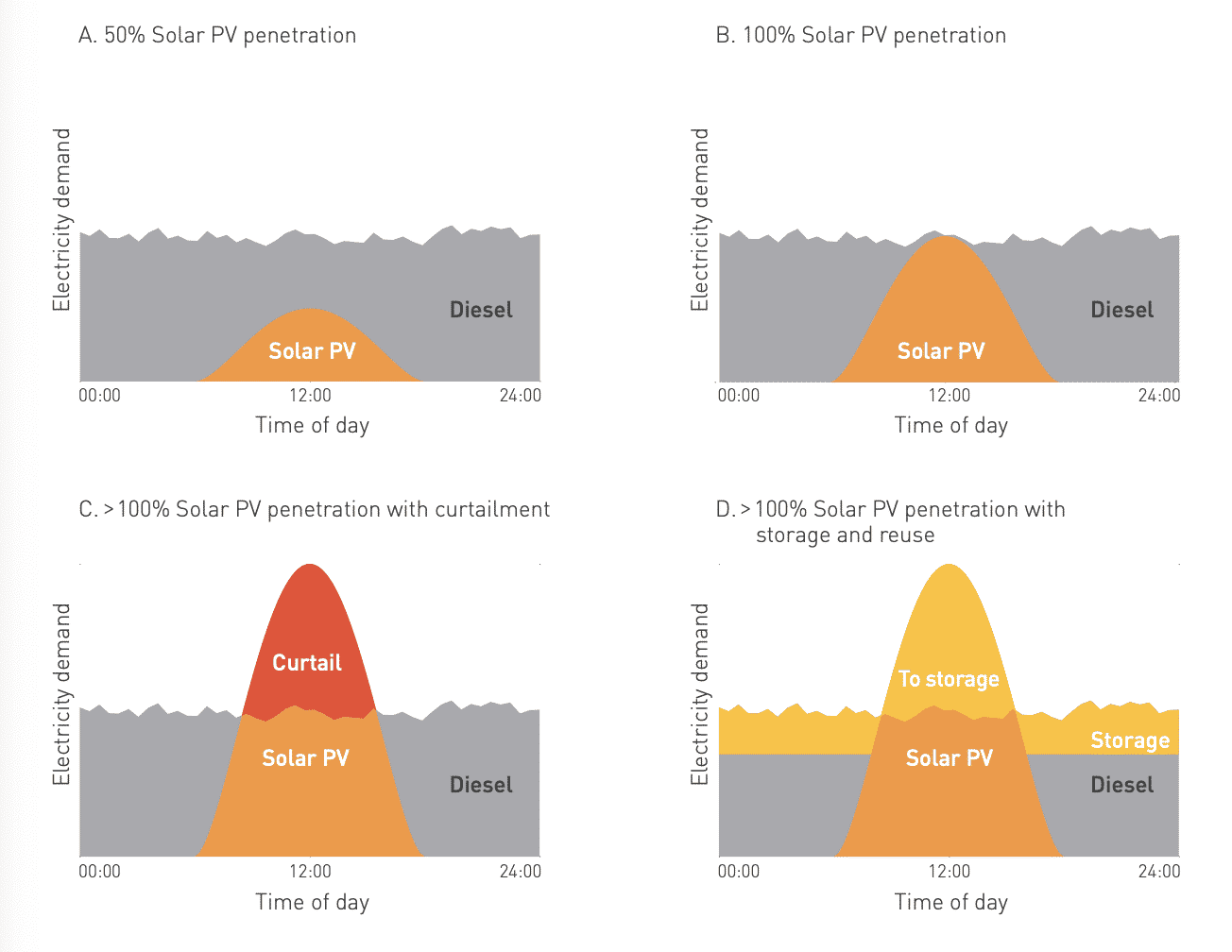 Figure 1: PV absorption at different times throughout the day in Australia (Arena, 2017)
Figure 1: PV absorption at different times throughout the day in Australia (Arena, 2017)
It is expected for the Rio Tinto plant to become active as early as 2021. This is only one initiative in many of Rio Tinto’s plans to decarbonise its profits. This project alone will reduce carbon emission by 90 000 tonnes, compared to gas-powered generation, this is equivalent to taking off 28 000 cars off the road.
Oz Minerals are another major player that are currently seeking a 55MW wind and solar hybrid plant, coupled with a battery storage system to cover up to 80% of their electricity demands for its proposed $1 billion West Musgrave Mine. Meanwhile, Element 25 have been flagged in trying to find a renewable energy proposal to possibly cover 90% of their energy needs for the Magnesium metals mine in the Pilbara. Other major companies such as Fortescue Metals Group, B2Gold, Gold Field, Nordgold and Harmony Gold, are all major players in the industry, which are turning to renewable energy.
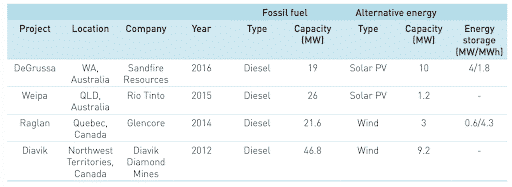 Figure 2: Mining companies relying on Renewable Energy to cover electricity demands in Australia (Arena, 2017)
Figure 2: Mining companies relying on Renewable Energy to cover electricity demands in Australia (Arena, 2017)
In the figure above we see a summary of other mining companies alongside Rio Tinto which have already taken leaps at actively been pursuing a renewable energy plant to cover electricity demands. This does not only stop here in Australia, the UK and Chile have also made a heavy investment into renewable energy technology to power their mining initiatives. What all these mining companies have realised is that like Darwin’s Theory of Evolution, if they do not adapt to the changing times, they will be left behind.
Why would these companies look for renewable energy as their salvation to cover their electricity demands? As can be seen in the figure below, Australia is currently rated as one of the optimal locations on earth for the highest irradiation (sunlight strength), when coupled with its naturally gifted wind climate, it poses an almost perfect state for renewable energy generation.


Figure 3: Australian climate advantages for renewable energy generation (Arena, 2017)
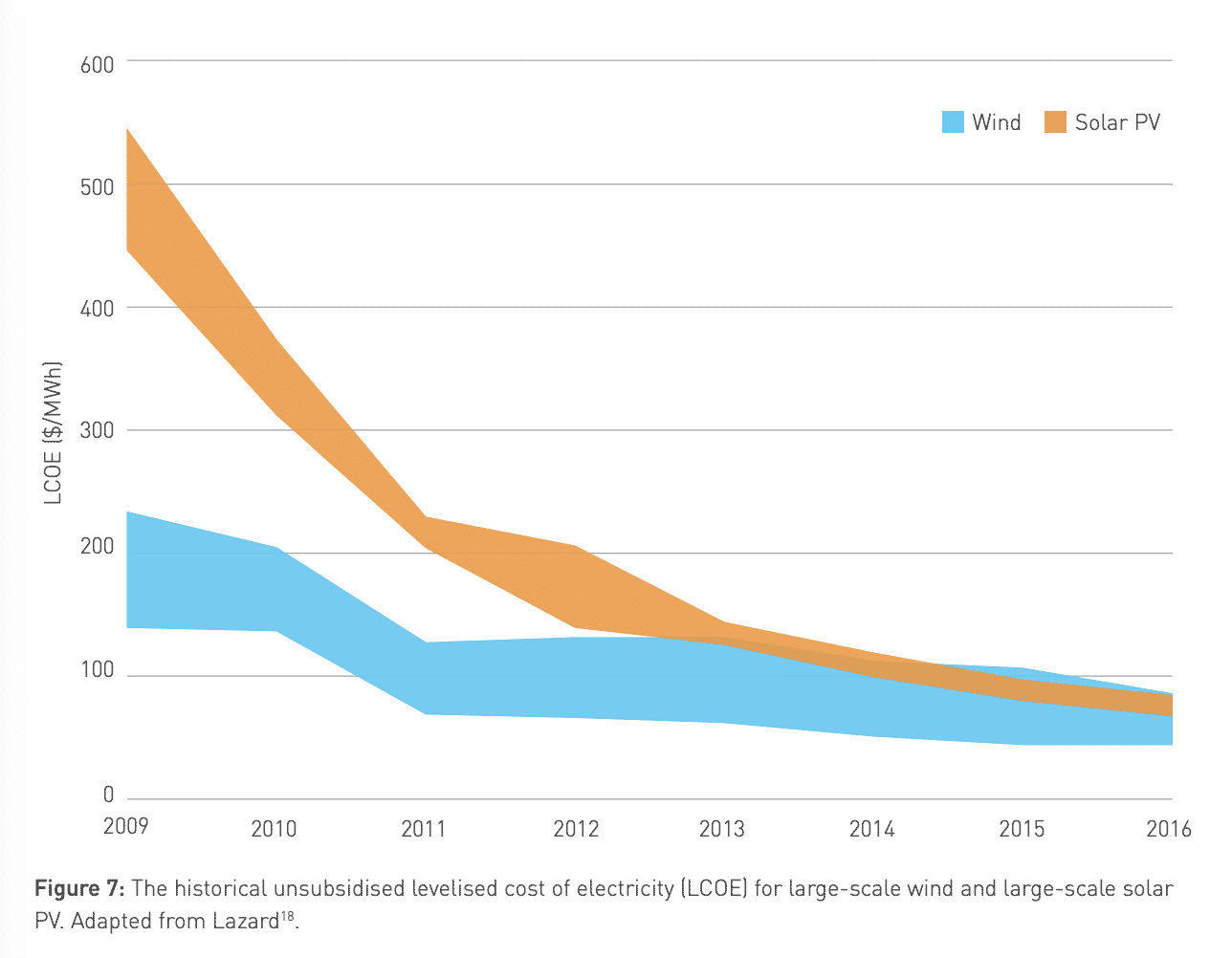 Figure 4: Projected fall of cost of wind and solar technology in Australia (Arena, 2017)
Figure 4: Projected fall of cost of wind and solar technology in Australia (Arena, 2017)
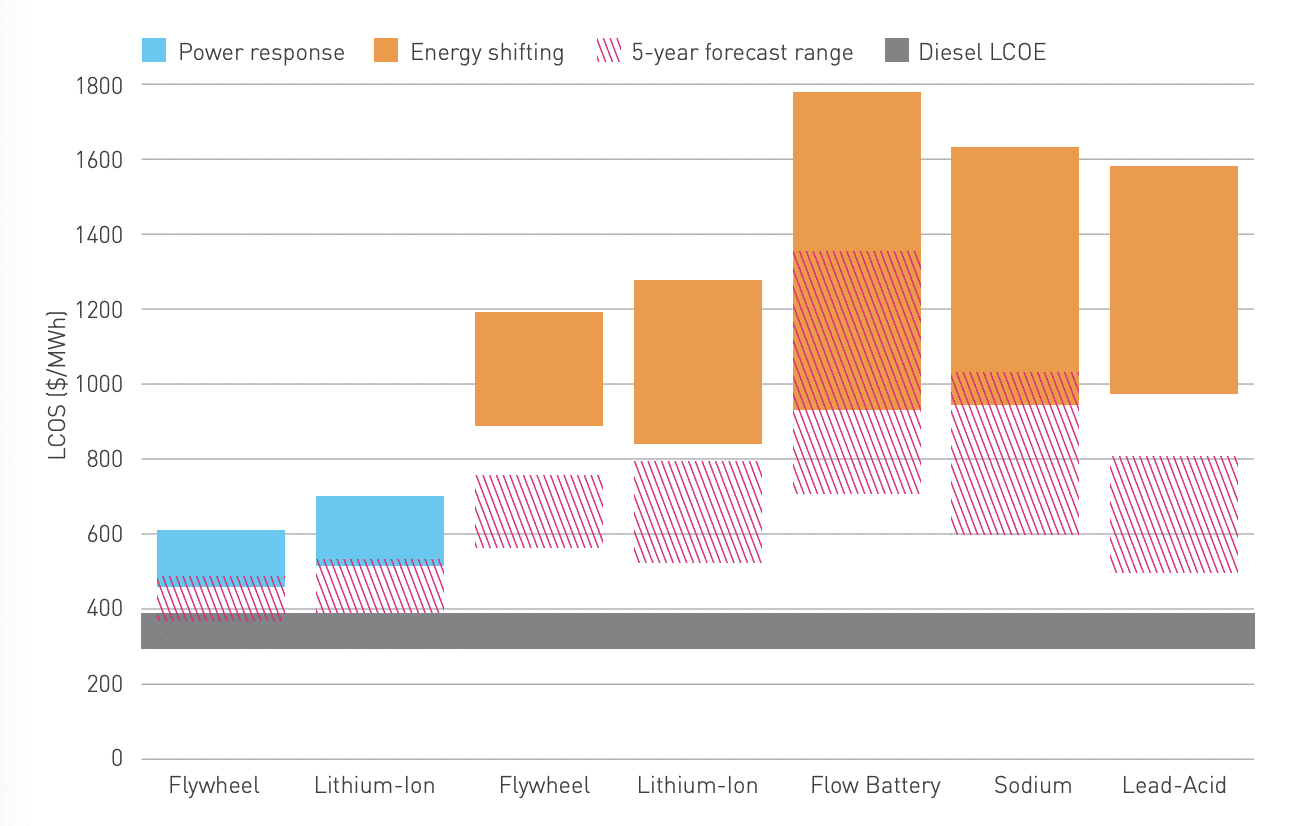 Figure 5: Projected fall of cost of batteries in Australia (Arena, 2017)
Figure 5: Projected fall of cost of batteries in Australia (Arena, 2017)
The number of renewable energy projects is projected to exponentially grow, especially as the cost of wind, solar and battery systems are expected to fall dramatically (projections evident in the figures above). As the market adjusts to these changes, if coupled with the increases in demand, renewable energy will take the reigns of being the new norm.
References:
https://www.mining-technology.com/features/going-green-renewable-energy-projects-at-mines-around-the-world/
https://reneweconomy.com.au/mining-giant-looks-to-wind-and-solar-to-power-huge-nickel-project-83753/
https://arena.gov.au/assets/2017/11/renewable-energy-in-the-australian-mining-sector.pdf
https://www.greentechmedia.com/articles/read/mining-companies-renewables-cost
Troy Adams
Troy Adams is the Managing Director of Global Road Technology (GRT) Specialising in Engineered Solutions for Dust Suppression, Erosion Control, Soil Stabilisation and Water Management. A pioneering, socially conscious Australian entrepreneur, Troy Adams is passionate about health and safety and providing innovative solutions that are cost-effective to the mining industry, governments and infrastructure sectors. Troy is also a tech investor, director of companies like Crossware, Boost, Hakkasan, Novikov and more.
